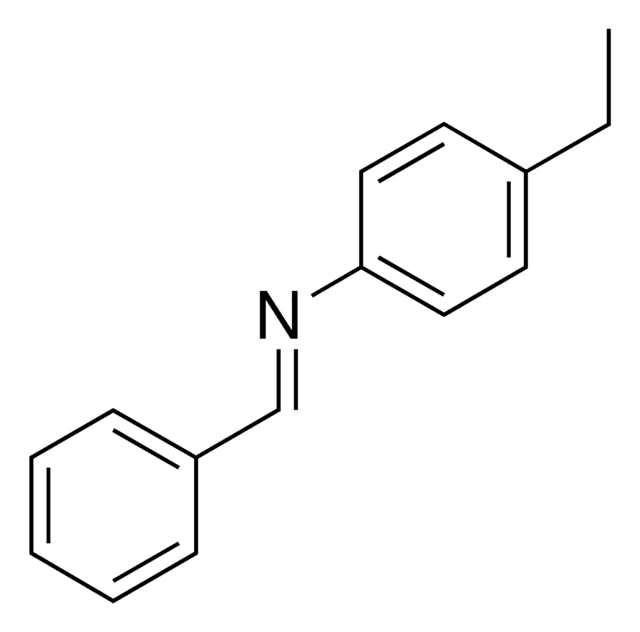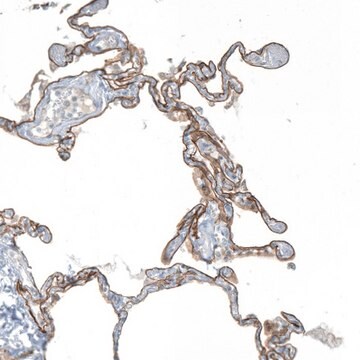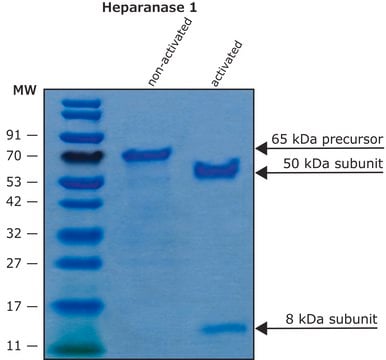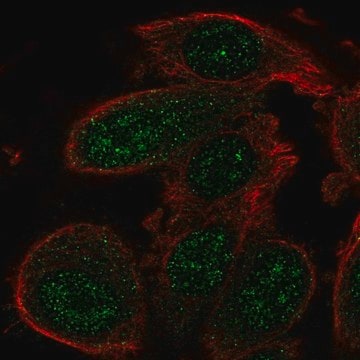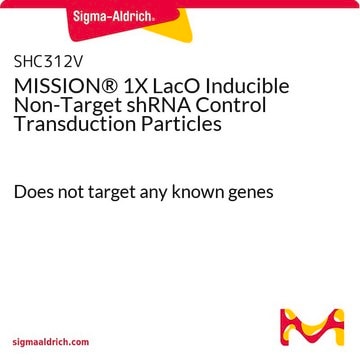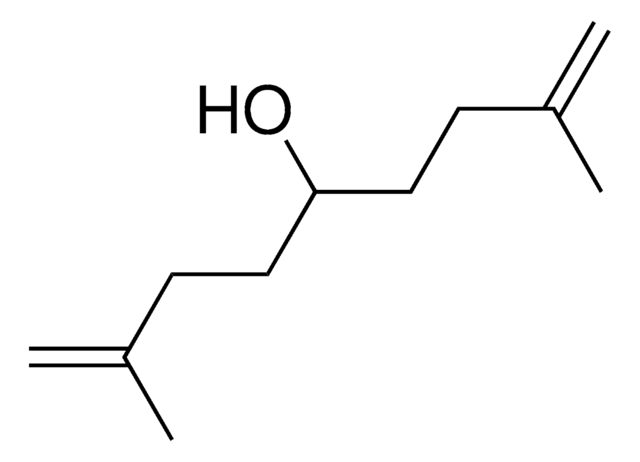SHC216V
MISSION® TRC2 pLKO.5-puro Non-Target shRNA Control Transduction Particles
Targets no known genes from any species
동의어(들):
MISSION®, MISSION® Control Transduction Particles, negative control, negative shRNA control, non-target control, non-target shRNA, non-target shRNA control, shRNA control
로그인조직 및 계약 가격 보기
모든 사진(1)
About This Item
UNSPSC 코드:
41106609
NACRES:
NA.51
추천 제품
유사한 제품을 찾으십니까? 방문 제품 비교 안내
일반 설명
The MISSION® TRC2 pLKO.5-puro Non-Target shRNA Control Tranduction Particles contain an shRNA insert that does not target any known genes from any species, making it useful as a negative control in experiments using the MISSION® shRNA library clones. This allows one to examine the effect of transduction of a short-hairpin on gene expression and interpret the knockdown effect seen with shRNA clones. Ampicillin and puromycin antibiotic resistance genes provide selection in bacterial or mammalian cells respectively. In addition, self-inactivating replication incompetent viral particles can be produced in packaging cells (HEK293T) by co-transfection with compatible packaging plasmids. The Non-Target shRNA Control Transduction Particles are provided as 200 uL at 1 x 106 TU/mL via p24 assay.
When conducting experiments using MISSION® shRNA clones, the proper controls should be a key element of your experimental design to allow for accurate interpretation of knockdown results. The MISSION Control Transduction Particles are a critical positive control to monitor transduction efficiency.
To see more application data, protocols, vector maps visit sigma.com/shrna.
To see more application data, protocols, vector maps visit sigma.com/shrna.
애플리케이션
To see more application data, protocols, vector maps visit sigma.com/shrna.
법적 정보
MISSION is a registered trademark of Merck KGaA, Darmstadt, Germany
Storage Class Code
12 - Non Combustible Liquids
WGK
WGK 3
Flash Point (°F)
Not applicable
Flash Point (°C)
Not applicable
시험 성적서(COA)
제품의 로트/배치 번호를 입력하여 시험 성적서(COA)을 검색하십시오. 로트 및 배치 번호는 제품 라벨에 있는 ‘로트’ 또는 ‘배치’라는 용어 뒤에서 찾을 수 있습니다.
이미 열람한 고객
The LIN28B/let-7 axis is a novel therapeutic pathway in multiple myeloma.
Manier S
Leukemia, 31(4), 853-860 (2017)
STAT-3 contributes to pulmonary fibrosis through epithelial injury and fibroblast-myofibroblast differentiation.
Pedroza M
Faseb Journal, 30(1), 129-140 (2016)
Small-molecule targeting of signal transducer and activator of transcription (STAT) 3 to treat non-small cell lung cancer.
Lewis KM
Lung Cancer, 90(2), 182-190 (2015)
Curtis A Clark et al.
Cancer research, 76(23), 6964-6974 (2016-09-28)
PD-L1 antibodies produce efficacious clinical responses in diverse human cancers, but the basis for their effects remains unclear, leaving a gap in the understanding of how to rationally leverage therapeutic activity. PD-L1 is widely expressed in tumor cells, but its
Katherine M Lewis et al.
Lung cancer (Amsterdam, Netherlands), 90(2), 182-190 (2015-09-28)
Lung cancer is the leading cause of cancer death in both men and women. Non-small cell lung cancer (NSCLC) has an overall 5-year survival rate of 15%. While aberrant STAT3 activation has previously been observed in NSCLC, the scope of
자사의 과학자팀은 생명 과학, 재료 과학, 화학 합성, 크로마토그래피, 분석 및 기타 많은 영역을 포함한 모든 과학 분야에 경험이 있습니다..
고객지원팀으로 연락바랍니다.
